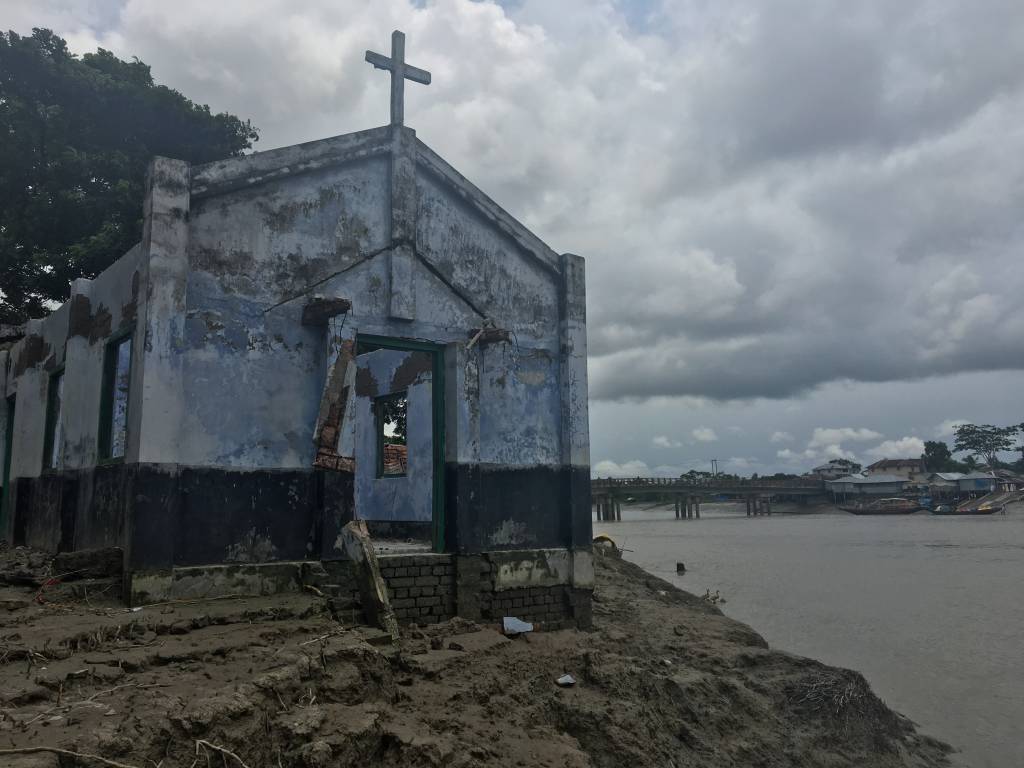Mongla is the starting point of tourist cruises into the Sundarbans forest, a UNESCO world heritage site. Rising sea levels and continuing soil erosion is making life difficult for people living on the banks of the Posur River. Many villagers I spoke to have already moved three to four times in the last few years. Most of them now live in rented houses with their families. According to current estimates, more than 18 million people in Bangladesh will be affected by sea level rise in the next 40 years.
Most of the people affected by soil erosion receive next to nothing in terms of compensation from the government. In Kanainagar village, people narrated stories of how they were given 2 kilos of rice as compensation on a one-time basis.
I was only able to visit Kanainagar, Saltala during my recent trip to the Sundarbans. But stories of soil erosion and rising seawater is happening in other villages on the Sundarbans delta as well. Most of the people who lose everything are moving to Dhaka in search of work and a new life.
Here are a few photos giving a glimpse of people’s lives here:

An eroded riverbank in Kanainagar village, Mongla, Bangladesh.

Remains of a church in Kanainagar village. Most of the inhabitants here are from the minority Christian and Hindu communities.

A fisherman stands on the spot where his house stood once on the banks of River Poshur.

Now he and his wife stay in this thatched hut. Villagers who lose their houses to soil erosion and high tide often receive only a few kilos of rice as compensation.

Kamala Sarkar stands in front of her dilapidated house in Dakhinkali village. The day I met her, Kamala and her husband were busy working on the temporary embankment which washed away during the high tide in the morning. Her husband, a daily wage worker at a local cement factory, couldn’t go to work and lost a day’s pay. Kamala told me they have moved three times in the last four years already as their house gets washed away by soil erosion.

A woman stands in front of her house in Saltali village. Every day during high tides, water inundates her house for hours.

In Saltali village I met Bishnupada Mistry. He lost his home to the erosions and now lives in another house a bit away from the river bank. He told me, he might have to move again soon.
But here right on the banks of the Poshur river, Bangladesh and India are jointly building a 1320 MW coal plant. The Rampal coal plant will need to import 4.72 million tons of coal per year. If the coal plant is built we will see a dramatic rise in shipping of coal, which will result in more soil erosion on the banks of the Poshur river. The world’s largest concentration of mangroves is also here providing a natural barrier against cyclones. Bangladesh faces a barrage of cyclones every year and their frequency is increasing. The proposed coal plant will be accelerating climate change which will increase sea level and soil erosion in Sundarbans.
You can learn more about the Sundarbans and why we must stop coal here.
When I left I wondered where will Kamala and her family be when I come next time? Will they even have a home to stay in?